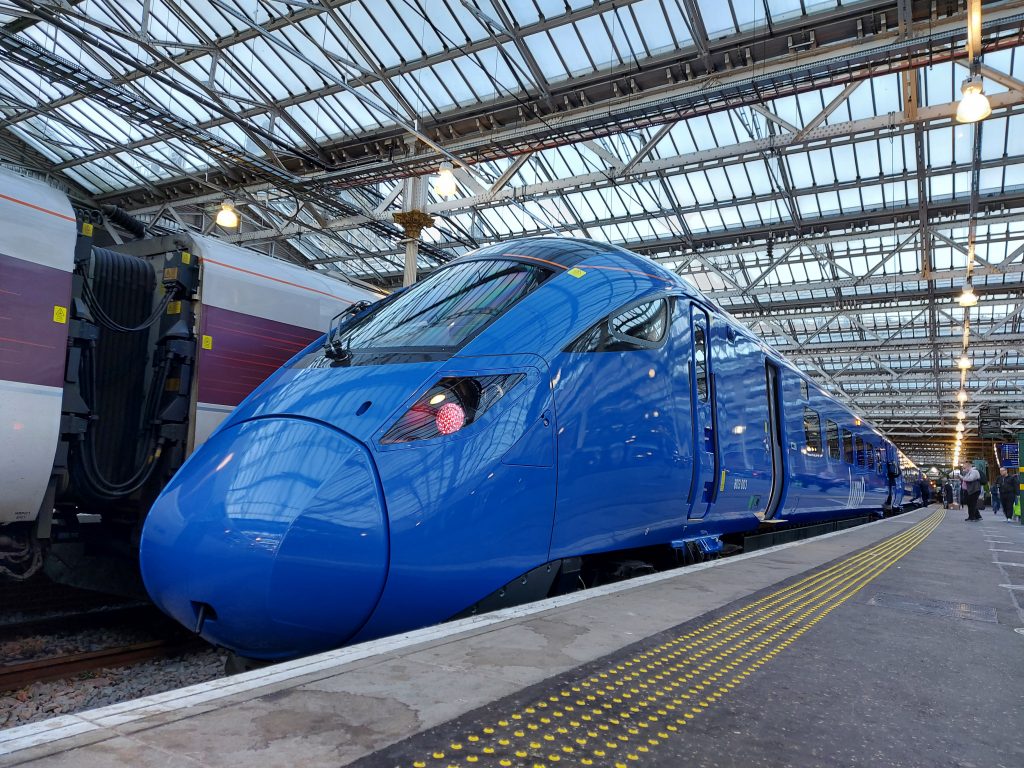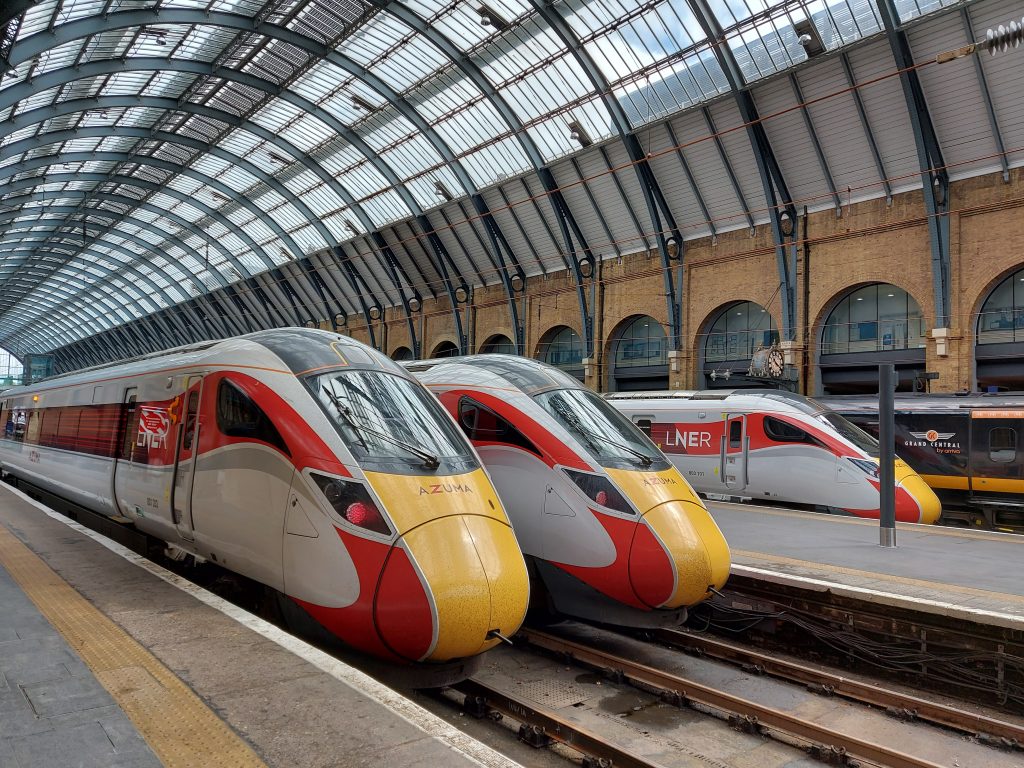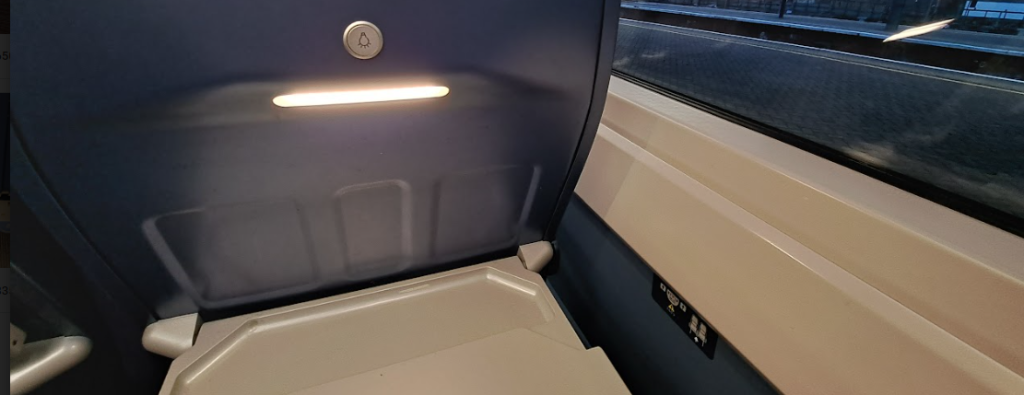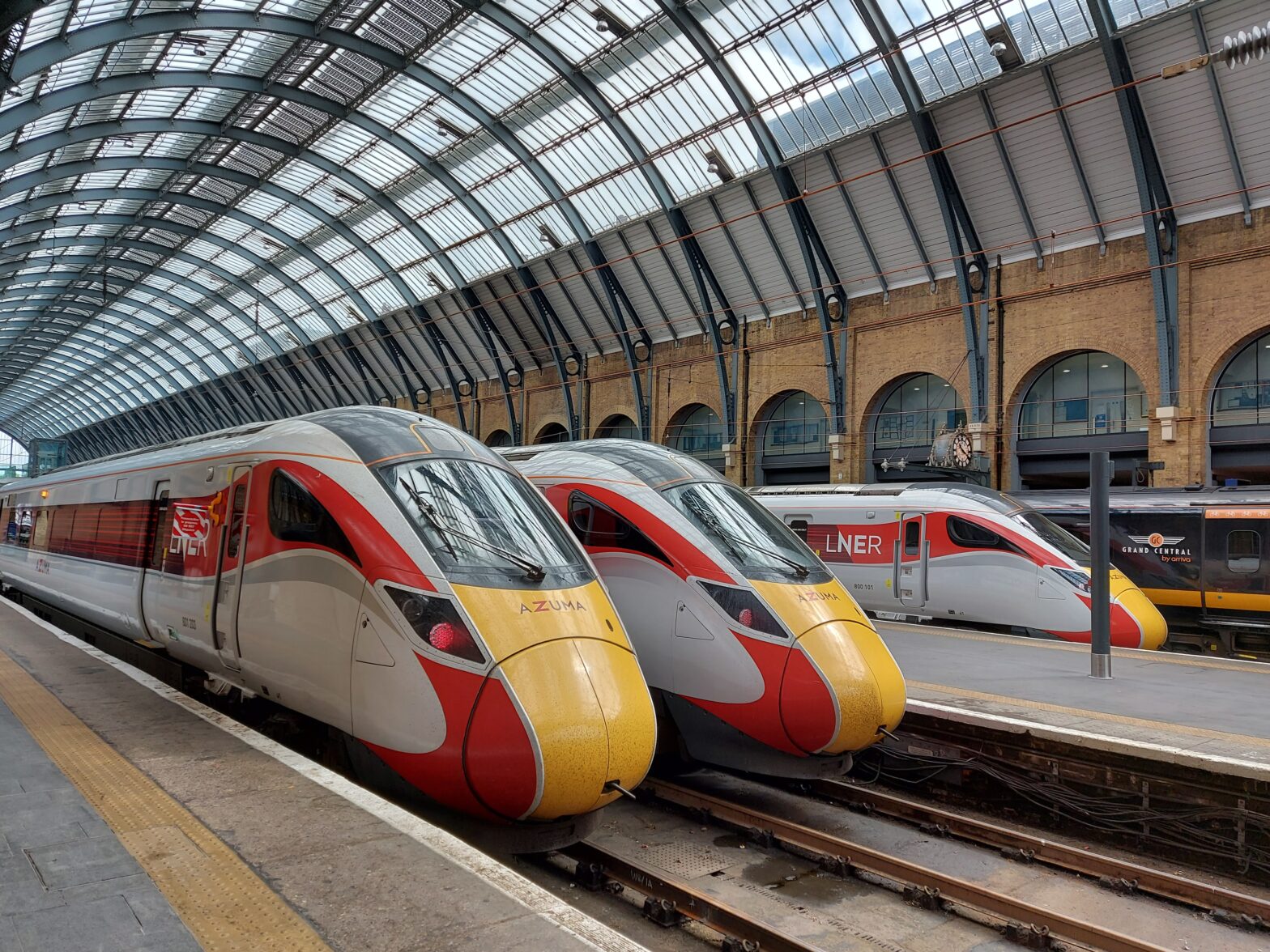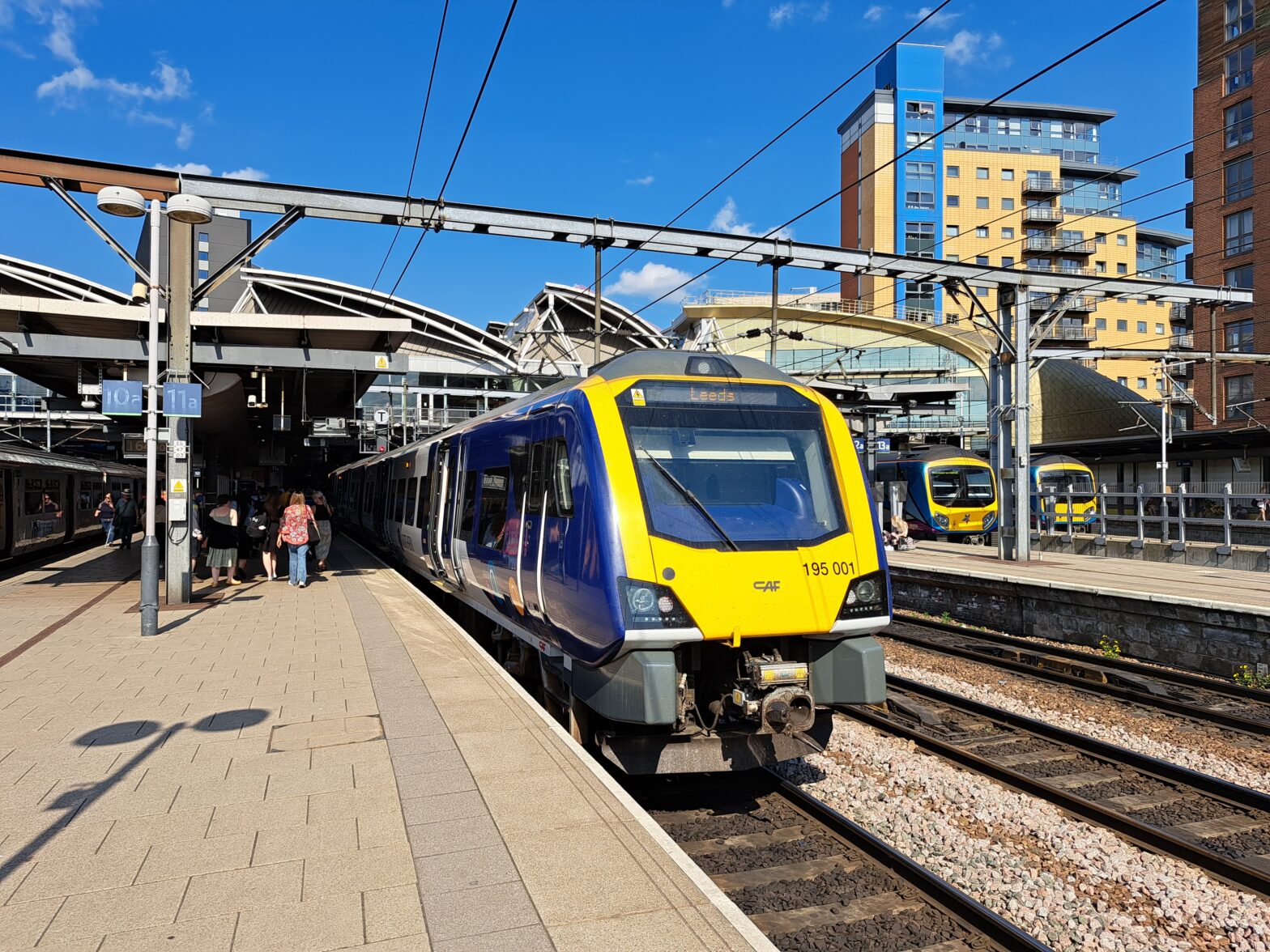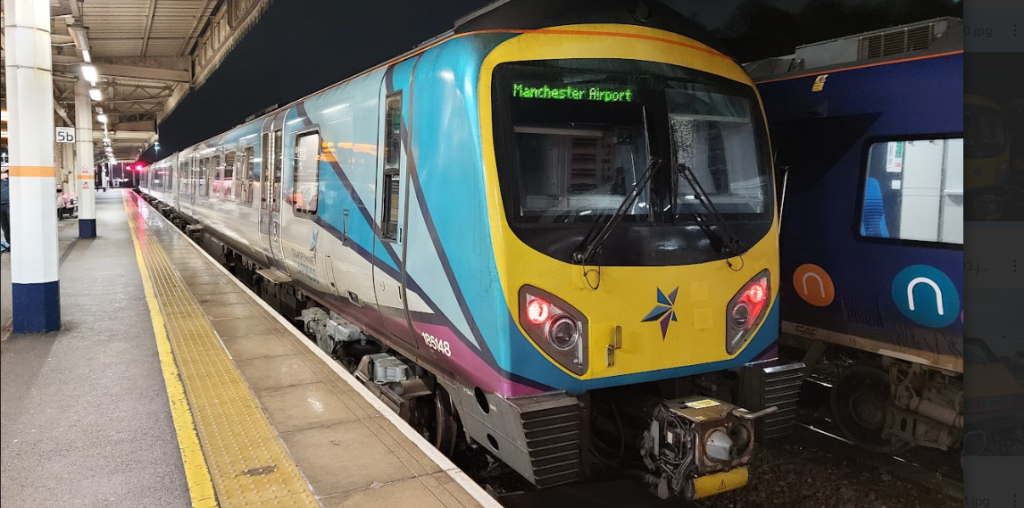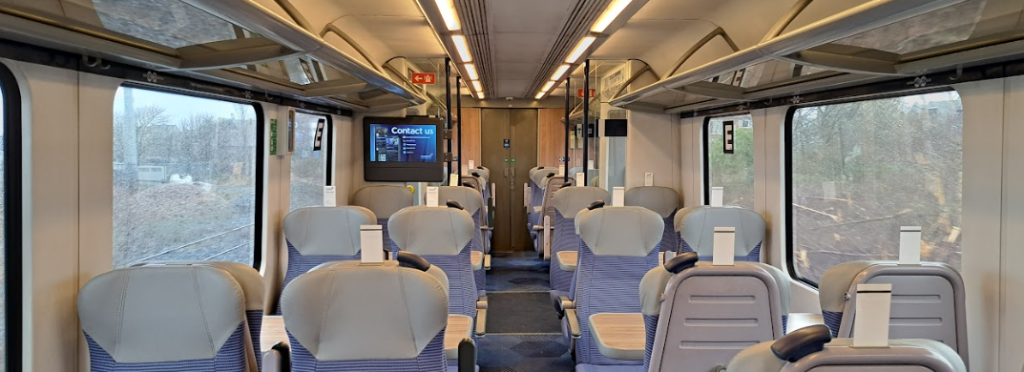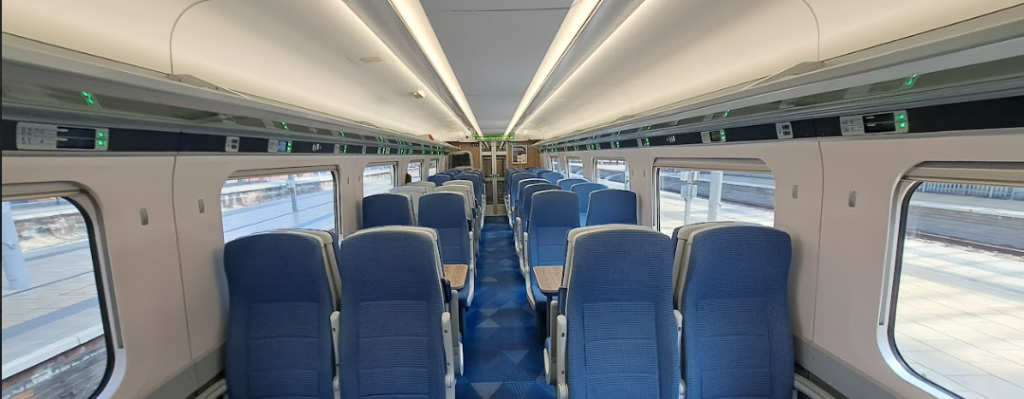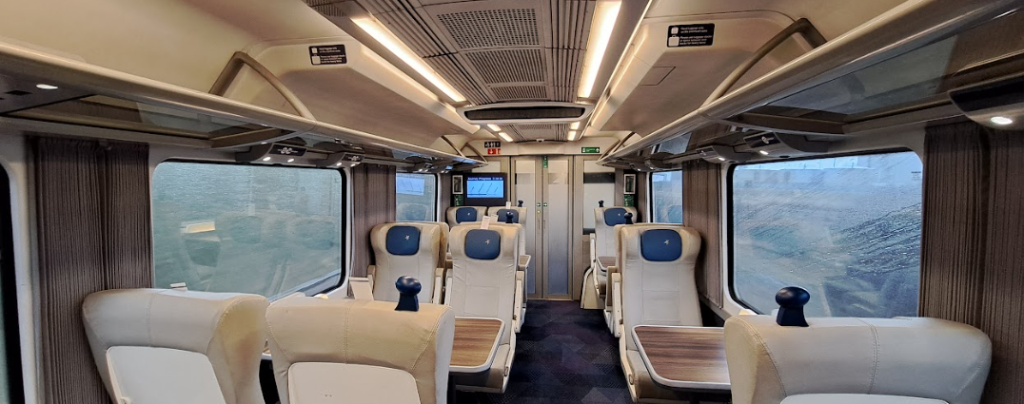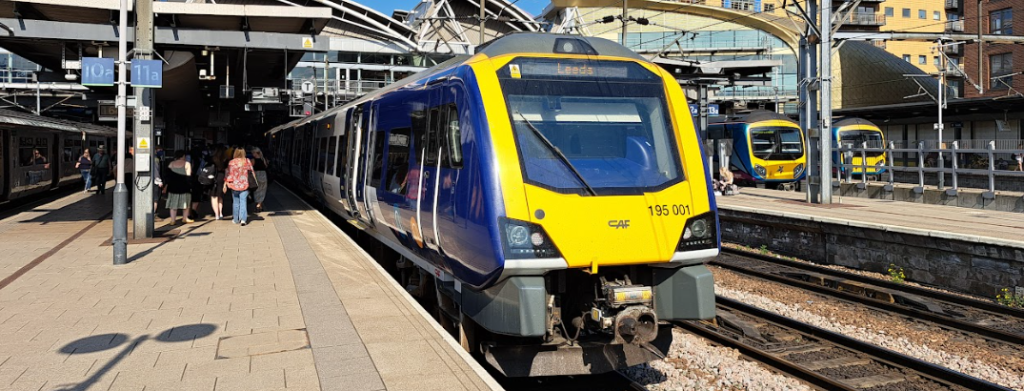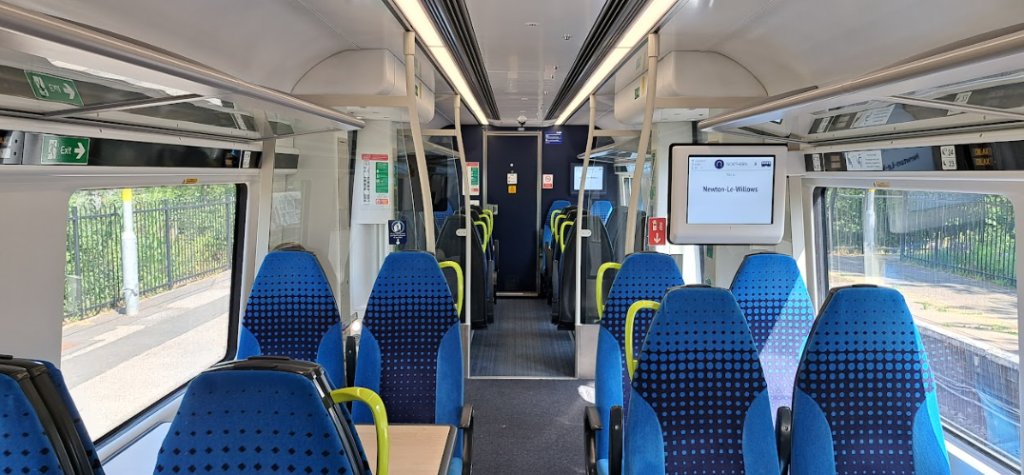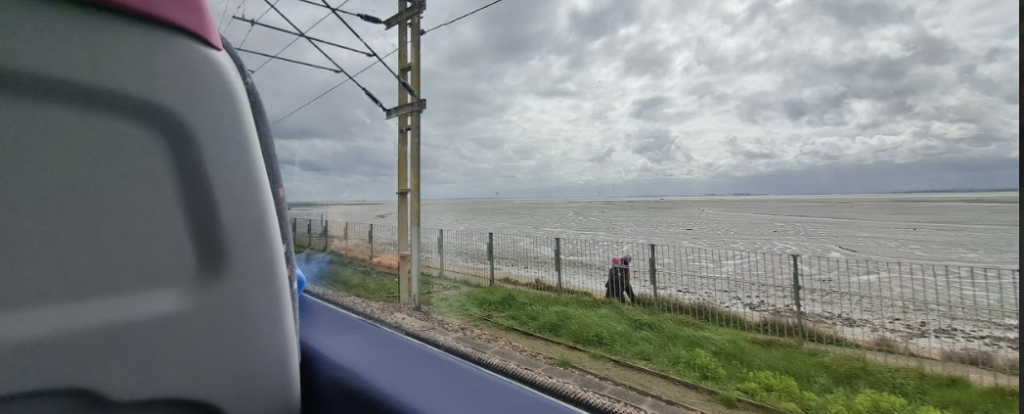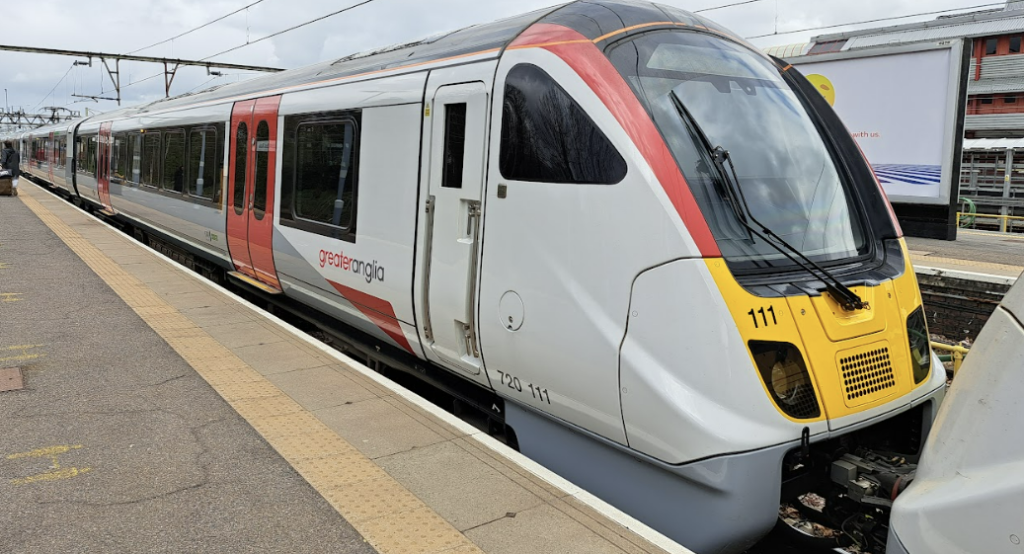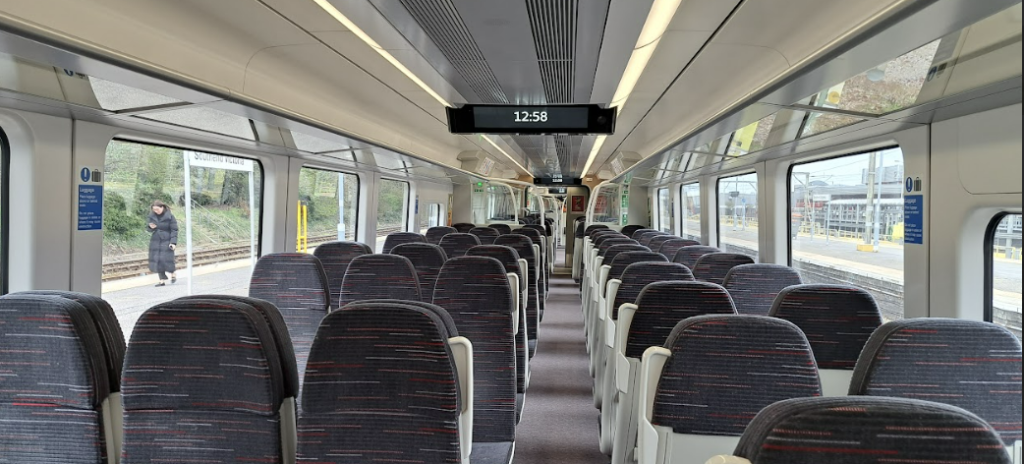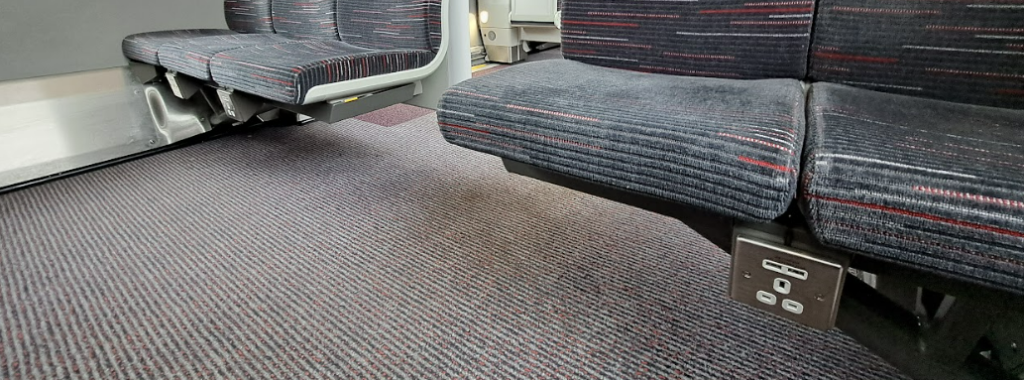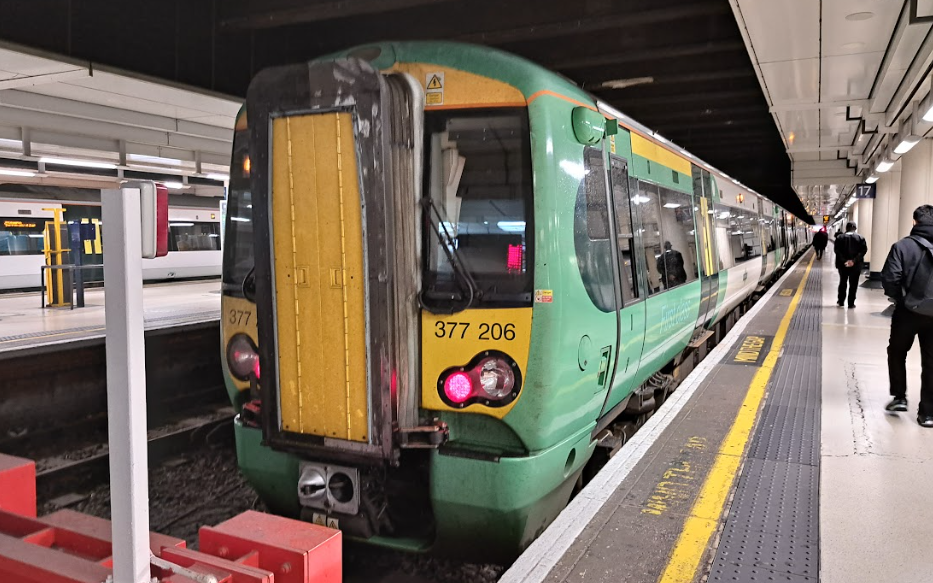If you’re looking at travelling from London to Birmingham (or vice-versa), you’ve probably noticed that you have quite a bit of choice! Three choices, in fact. You can take Avanti West Coast, Chiltern Railways or London Northwestern Railway. But what’s the best train from London to Birmingham? Well, in March 2023, I took a trip from Birmingham to London, and back, then back to London, to find out.
Who runs the trains between London and Birmingham?
Before we work out the best train between London and Birmingham, we should take a quick look at who runs them.
There are three companies to choose from:
- Avanti West Coast run the fastest trains between London Euston and Birmingham New Street. They take as little as 1hr 15min and are seen as the ‘premium’ option. They cost more and have catering options as well as First Class
- London Northwestern Railway run on the same route, but divert to also serve Northampton. They stop at more stations and a typical journey takes around 2hr 15min. The trains tend to be more of a ‘commuter’ style with tickets starting at much lower prices than Avanti
- Chiltern Railways operate on a different route between London Marylebone and Birmingham Moor Street and Snow Hill. The fastest journeys start at around 1hr 40min with a couple of different train types. You won’t find any catering but the trains are a sort of mid-point between the long-distance style of Avanti and commuter-style of London Northwestern. Prices can start even lower than on London Northwestern Railway, but are typically just a little higher.
Finding the best train from London to Birmingham – the plan
I was setting myself up for quite the day. Starting in Newcastle at 06:40, I’d need to make the 3hr 20min trip down to Birmingham New Street to start this scientific adventure.
First up was the slowest of the three – London Northwestern Railway. I’d be leaving Birmingham at 10:36 and getting into the capital for 12:49 before having a spot of lunch. I didn’t want to make the connections too tight in case of delays.
Avanti West Coast were next, taking me straight back up to Birmingham New Street at 14:16, arriving at 15:48.
Finally, I’d be taking a stroll across Birmingham to Snow Hill station where I’d be taking the 16:51 Chiltern Railways train to London Marylebone, arriving at 18:41.
All that awaited me now was the 05:30 alarm…
Trip 1 – London Northwestern Railway
First up in the battle to be the best train from London to Birmingham was the super-budget London Northwestern Railway. Leaving at 10:36 from Birmingham New Street, we were due into London Euston at 12:49. This was going to be the slowest train of the day!
They run trains every half an hour, with the timetable having been simplified on this route last December.
The cost
I paid £12.20 for an Advance single on my train (with a 16-25 Railcard) a week in advance. However, this is by no means the cheapest possible fare.
An Advance single (without Railcard) starts at £8 one way. Tickets on the day range from £29.00 for a Super Off-Peak Return to £99.20 for an Anytime Return (correct as of March 2023).
Waiting to get on board
Birmingham New Street can be quite the confusing station to navigate, with different coloured lounges and various sets of ticket gates to get onto the platforms. Fear not though, all of the departure boards tell you which coloured area to aim for:
If you’re coming off a connecting train instead, head to the ‘b’ ends of the platforms. This allows you to switch over to your connection without running in and out of different sets of barriers. I had a while to wait though, so ended up using an ‘a’ end and having a walk around the station. It’s a lot less bleak than the rather dark and dingy platforms!
My best advice if you’re peckish and on a budget would be to head up the escalator on the left of the picture above. There’s a Tesco on the upper level (part of “Grand Central”) which sells all the usual meal deals and such at the normal prices you’d expect.
With a cheese twist in hand, I headed for the platforms and was happy to see that my train was already there and ready for boarding. Most London Northwestern trains to and from London arrive around half an hour before they leave again and they’re usually left unlocked. So, you have plenty of time to find yourself a seat.
The train itself
London Northwestern Railway runs a fleet of Class 350 ‘Desiro’ trains on all services between London and Birmingham. There are a couple of different types, with some having tables and sockets, while others are laid out for short-distance commuter trips. Most run as eight coaches on these services. In the peak hours, you might find that an extra four coaches are added/removed at Northampton, so that 12 coaches run between London and Northampton.
They’re fairly decent looking trains, having been reliably running on the West Coast Mainline for nearly two decades:
The seat experience
So, remember when I said that some trains on the route are really meant for short-distance commutes? As soon as I got to the platform, my heart sank, as I could see that at least one part of the train was one of these. This is the chance you take when you book with London Northwestern!
A quick pace down the platform didn’t get me any further luck, as it turned out that both of the four-coach trains that formed the service were the same type. I gave up and went back to the rear, which seemed to be the quietest place to go. You’re most likely to get a seat in coaches 7 and 8.
So, what are the seats like? Let’s take a look:
Yep, they aren’t winning any awards for comfort. This type of train doesn’t have any sockets, either, so bring a powerbank just in case.
I found myself an airline-style pair of seats which had a reasonable amount of legroom (I’m 6ft). They were firm but I soon settled myself in, even if I was a little peeved that I’d drawn the short straw.
If you end up with the ‘other’ type of train on this route, you’ll get 2+2 seating with tables and sockets. Unfortunately you can’t guarantee which type you’ll get, though!
Storing your luggage
I couldn’t see any proper luggage stacks in the carriages I walked through, so the luggage racks you see in the image above are all you’ve got.
They looked large enough to store a cabin-sized suitcase so will be enough for most. I certainly wouldn’t take this train if I was taking the kitchen sink with me, though! Throughout the journey, I didn’t see anyone struggling to store anything and there weren’t any cases randomly left around the doors.
Fancy an upgrade?
First Class fares start at £20.30 one way (without a Railcard). No matter which type of train you get, it’s all mostly the same. This means that on a train like mine, it’s a bit of an upgrade, but it’s almost a downgrade on the more ‘luxurious’ ones.
What perks do you get? Curtains and a seat that reclines, as well as a guaranteed power socket. I was surprised to see that the compartment was really busy though, so this is the best photo I could get to show what the seats are like:
It certainly won’t be winning the award for best train from London to Birmingham in First Class, that’s for sure. If you really want to upgrade on the day though, it’s £10 single and £15 return on weekends. You can do it on board, too. There’s more info on the London Northwestern Railway website.
Update – From May 21st, 2023, First Class fares will no longer be offered on this route. So you can enjoy a ‘free’ upgrade to these seats from this date if you’d like!
If you’re feeling peckish
Then you go to the shop before you get on. There isn’t any catering on these trains! As I mentioned earlier, there’s a Tesco in Birmingham New Street if you’re on a budget. London Euston has plenty of options as well, including an M&S.
Onboard service
There were at least two different guards on board but they didn’t make good on their promise of ‘walking through the train’. All you’d get were slightly-too-loud announcements repeating what the automated ones had just said. No tickets were checked, either.
I wasn’t overly impressed but on one train we passed at Northampton I could see the guard with a ticket machine around the centre of the set. So it’s possible that your guard might actually make themselves seen!
Final thoughts
We arrived in London Euston on time, at 12:49. What did I think of London Northwestern Railway? It definitely isn’t the best train between London and Birmingham, but it can be very cheap, especially if you have a Railcard.
You have to know what to expect, which is that this is a commuter train between Birmingham and Northampton and Northampton to London. It just so happens that it runs all the way through. If time isn’t of the essence and you find a bargain, go for it. After all, it was a well-kept train and noticeably very clean.
Trip 2 – Avanti West Coast
After a spot of lunch in the Doric Arch pub over the road, it was time for the next train. My train was the 14:16 Avanti West Coast service to Preston via Birmingham, and it was set to take just over an hour and a half. This was a good 45 minutes or so quicker than London Northwestern! On time alone, you could say that this was the best train between London and Birmingham.
Avanti generally run two trains per hour between London and Birmingham, though the eventual aim is to get this back up to three. COVID-19 staff shortages and DfT cost-cutting have meant that this date keeps getting pushed back. At the minute, you’ll find a couple of hours in the morning and evening peaks where there’s a third train every hour.
The cost
It was £20.85 for an Advance single (with a 16-25 Railcard) booked a week in advance. If you want a much cheaper price on Avanti, you’ll need to plan ahead a little more.
Fares do start at £8 (without a Railcard) but it seems that this isn’t too common. The best I could find was £14 on the late-night trains two months ahead*. Even then, London Northwestern Railway undercut this by a fair amount:
If you want to buy a ticket on the day, it’s £65.80 for an Off-Peak Return or a whopping £188.80 for the Anytime version.
*Fares quoted are correct at 27/03/23 for 24/05/23 and are subject to change at any time. Railsmartr are not responsible for any loss or disappointment incurred as a result of this information.
Waiting to get on board
London Euston is pretty infamous for the ‘Euston Scrum’. This is what happens when everyone has to wait on the concourse before a train is announced before making a beeline for it as soon as the platform appears on the screen!
It isn’t pleasant, so Network Rail tried to ‘fix’ the issue by replacing the big set of departure boards with two smaller sets:
While the boards are definitely better, it’s a bit of a strange place to put them. In any event, I’d looked up my platform online already, so I just hovered around at the top of the ramp. Just under 20 minutes before the train leaves, the platform is announced. There’s also a full ticket check before you get on.
This just applies to Avanti trains. If you’re taking a London Northwestern train, there’s usually nobody checking tickets or you’ll just have to pop it in a gate.
I had to be quick after the train was announced, as people were already running for the platform! The general atmosphere for this way of boarding is never great, and it affects Avanti the most here.
The train itself
I was taking a nine-car Pendolino train today. Introduced to the route in the early 2000s, they’re certainly rather striking. They’re capable of tilting around corners and have a bit of an ‘airplane’ feel inside.
In the early 2010s, some sets were extended to 11 cars and several new ones were built, as well. As we speak, they’re also getting a pretty extensive refurbishment.
Unfortunately, I was in for the ‘original’ experience, which was an unrefurbished nine-car. At the time of writing, most trains haven’t been refurbished just yet.
Storing your luggage
I headed for the unreserved coach, which is Coach C on these trains. Every carriage has quite a few luggage stacks dotted around, so you won’t struggle for space.
I wrote in my review of luggage space on trains that I was pretty impressed by the overhead racks, too. Just beware that they’re smaller in some parts of the train. This is usually where there’s equipment on the roof.
The seat experience
The seats are fairly pleasant, though legroom is a little tight in the airline-style ones. The reason I made a beeline for a table seat is that they’re the only seats with sockets on the unrefurbished trains. By each window table seat, you’ll find two USB sockets and a three-pin one:
The one ‘hack’ for getting around needing a full-sized table to use a socket is in Coach A. Seat A28 has a half-sized table but it faces a luggage rack, so you’ll not have anyone sat opposite you. A21 is the same, but it doesn’t have much of a window view. You’ll find these seats at the very back of the train heading south, and the very front going north.
On the refurbished trains, there are sockets at every seat. It’ll just take a little while for every train to be done.
The one thing I had noticed though was that everything was fairly shabby. The seat next to me had a massive rip in it and the seat-backs had paint peeling off. Clearly with refurbishment on the horizon, standards have slipped.
Fancy an upgrade?
First Class fares start at £42 one-way for an Advance single (without Railcard). For this, you’ll get a bigger reclining seat, as well as complimentary food and drink (menus available here).
However, if you just want to upgrade on the fly, you can try Standard Premium. In a nutshell, it’s the First Class carriage without the free food and drink. It’s £25 to upgrade on board. I’ve tried this before and it was definitely worth it for the extra space, but remember that £25 is the price no matter how far you go.
If you’re feeling peckish
There’s a shop in Coach C. It sells quite a variety of food and drink, and it has the positive of allowing you to browse what’s on offer without needing to ask.
It opened pretty much straight away after leaving Euston, and was doing good business all the way through to Birmingham. Prices were about what you’d expect for a train, with a meal deal including a sandwich coming to £5.90 (as of March 2023). You can find the full menu here.
At the time of writing, at-seat service is technically available in Standard. I say ‘technically’, because I have never known this to be working. From May 2023, it’s going to be discontinued.
Onboard service
The Train Manager made an announcement and again claimed that they’d be walking through the train, but I never saw them. We did however have regular runs from cleaning staff with bin bags.
Final thoughts
If you want a ‘long-distance train’ experience, then Avanti is likely to be the best train between London and Birmingham. The main stickler is that it’s quite expensive, and even booking in advance doesn’t get it anywhere near the price of London Northwestern Railway.
Coach C was very busy, too. I had two other people at the table with me for most of the trip. It’s definitely better if you have a seat reserved in advance (and a suitable one, at that), as some trains just don’t have many unreserved places.
Still though, we arrived into Birmingham New Street on time. It’s a better bet if you have lots of luggage too, as there’s plenty of space for it.
Trip 3 – Chiltern Railways
It was time for the final trip. So far I didn’t have any overwhelming feelings about what the best train from London to Birmingham was, as both companies had been pretty much as expected. One was cheap and felt like a commuter train, one was more expensive and felt like a ‘proper’ one.
Chiltern almost falls in the middle. My 16:51 train from Birmingham Snow Hill to London Marylebone took 1hr 50min, which is one of their faster ones on the route.
You’ll find two trains per hour on the route for most of the day, though one per hour tends to start from Birmingham Moor Street during Off-Peak hours.
The cost
My Advance single ticket from Birmingham Snow Hill to London Marylebone cost £13.20 (with Railcard) booked a week in Advance. Tickets start at £6.40 (without Railcard) one way. Even on the day I booked, you could find some cheaper trains at a similar time for £10.55 (with Railcard).
If you want to buy on the day, fares range from £36.40 (Super Off-Peak Return) to £135.30 (Anytime Return) as of March 2023.
Waiting to get on board
Birmingham Snow Hill station certainly won’t be winning any design awards. It’s a pretty depressing Brutalist building with all of the platforms underground. That said, it’s small and there’s plenty of space to wait, so it isn’t truly awful. If you want some fresh air, you can go right to the back of the platforms.
It’s worth mentioning that the other station, Birmingham Moor Street, is significantly nicer. Restored back to its original GWR heyday, you’ll probably prefer to wait around here if you can:
The reason I’d picked Snow Hill was so that I could have the first pick of seats when the train arrived. It was also so I could show you what the interior was like before it became swarmed with people!
The train arrived in from London on-time at 16:39, meaning that it was a fairly short wait til it went back to London. This varies throughout the day, but usually the train will be there a little earlier. In any event, there wasn’t much of a crowd waiting, with most people who want this train jumping on at Moor Street instead.
Notably, quite a crowd joined at Birmingham Moor Street. If you’re taking a train that starts at Snow Hill at a busy hour of the day, it might be best to book from there. The platform that these trains use at Moor Street is quite narrow and it didn’t look like the most comfortable place to wait.
The train itself
Today I had a three-car and two-car Class 168 Chiltern Clubman coupled together to make a five-car train. Anything from three to six cars is common on the route, but I’ve never experienced anything severely overcrowded.
My train had been built in 2000, so it was around the same age as me! I couldn’t get a photo until we arrived in London, but it’s the train on the left:
Storing your luggage
It did take a bit of looking, but there are luggage stacks on this train. You’ll find them right at the inner ends, usually opposite a toilet or next to the doors between the carriages.
The overhead racks looked capable of storing cabin-sized suitcases at a push, but it might have been a little cosy. It certainly wasn’t the best train from London to Birmingham for luggage, but most people wouldn’t have a problem. During the journey I certainly didn’t notice anyone struggling to store anything.
The seat experience
The one thing that you notice when you board is that these are fairly classy looking trains. There are actually two kinds of seats, with the ones at the carriage ends having a bit of a flatter and thinner back and headrest. The most comfortable ones have more of a wraparound headrest and look like this:
You’ll find a socket at every window seat, including at the tables. The seats themselves are really quite comfortable and probably the best of the three trains I’d tried.
Fancy an upgrade?
In most cases, it’s tough luck. Chiltern abolished First Class quite a few years ago! According to their website, the ‘Business Zone’ carriage isn’t available either. This was a carriage on certain trains where you could pay on board and upgrade for a bigger seat and more space. However, I’ve noticed trains still running around with this carriage, and consensus seems to be that if it’s available, you can travel in it without an extra charge.
If you’re feeling peckish
Go to the shop beforehand! There isn’t any catering on Chiltern trains. Snow Hill is near a number of shops including a Tesco. At Marylebone, you’ll find an M&S Food.
Onboard service
All Chiltern trains need to have a guard on board between Birmingham and Banbury. After that, the driver can operate the doors in most cases.
Before we left Snow Hill, the guard made an announcement and came through the train checking tickets multiple times on the trip. After two trips with totally invisible staff, this was quite a breath of fresh air. He was friendly, efficient and enthusiastic.
Final thoughts
This was probably my favourite journey of the three. The train was clean, comfortable and laid out properly for the sort of journeys being made on it. The atmosphere on board as well was completely different to the other two trains.
Everyone was chatting to each other and I spent the second half of the trip talking to a mother and daughter off to the theatre. Naturally this isn’t going to happen on every train, but it was nice nonetheless.
We arrived four minutes late into Marylebone, having followed a late-running West Midlands Railway train for the first part of the trip out of Birmingham. It was only 15 minutes or so slower than the more expensive Avanti train, which seemed a fair compromise considering how much cheaper it was.
Marylebone is a charming little terminus to arrive and depart from, too. It’s one of the smallest London stations and doesn’t have the ‘chaotic’ feeling of the likes of Euston:
Keep an eye out for some of the old Network South East signage, too (like the ‘tickets’ sign). Rather quirky considering it hasn’t existed for three decades!
The verdict – what’s the best train from London to Birmingham?
I’d say that the best train from London to Birmingham, all things considered, is the one operated by Chiltern Railways.
It doesn’t do catering or First Class, but it was a good balance between cost and journey time. The trains are classy and comfortable, too. It’s also the only train I caught where the guard actively walked through and checked tickets.
There’s no doubt that London Northwestern Railway will likely give you the cheapest of the cheap fares, but the trains often reflect that.
Avanti West Coast would likely for some be the best train from London to Birmingham. After all, it’s the fastest and has the most amenities. But boarding at Euston can be quite stressful and the price is quite a bit higher than the alternatives. The train I caught also felt rather unloved!
Both London Northwestern Railway and Avanti West Coast are receiving new and refurbished trains on these routes, so it’d be interesting to give this another go in the future and see if Chiltern still come out on top. Notably, from May 2023, it’s expected that the average journey time on Chiltern will increase to around two hours. The trade-off is that the likes of Warwick get more direct trains to London.
Is there anything else I should know?
Looking to know more about the Capital? Take a look at our guide to travelling to London. We’ll tell you about getting the best fares on routes like Edinburgh to London and Southend to London, as well as whether it’s worth upgrading to First Class on Avanti.
No matter which train you choose though, don’t forget that you can book all of them fee-free with Railsmartr. We don’t charge any fees if you change your plans, either.
